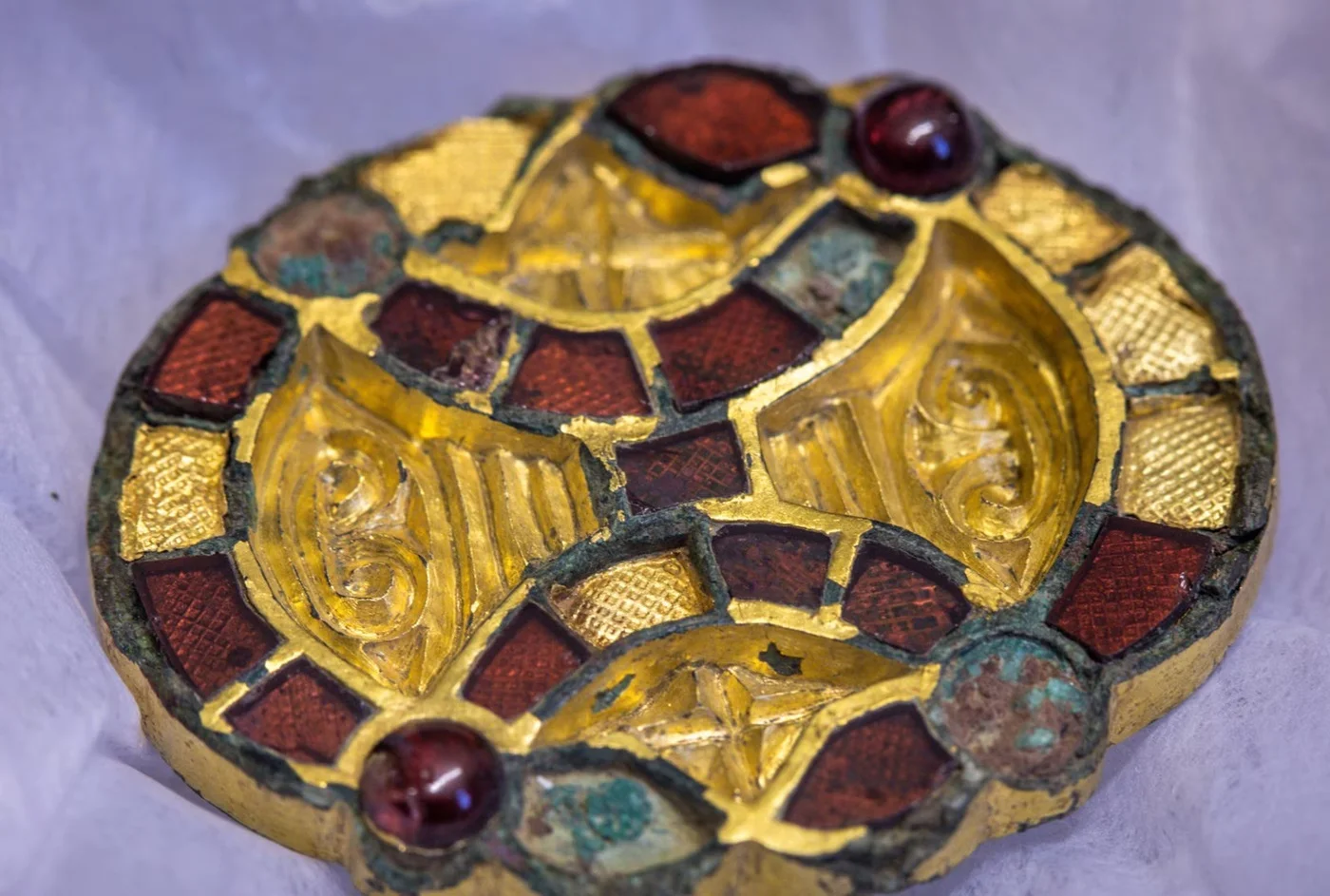A brooch discovered during a field inspection near Reez in Mecklenburg-Western Pomerania has been described as one of the most outstanding discoveries of 2024.
Dating back to the 7th century, the brooch is crafted from gold-plated silver and adorned with inlaid red almandine garnets.
These semi-precious gemstones were highly prized during the Late Roman period and were arranged using the cloisonné technique, a style commonly referred to as garnet cloisonné.
The garnets are set in an intricate design resembling geometric entwined snakes encircling the edge of the ovoid shape. The cells are rectangular with curved outer edges, ending in kite-shaped garnets that form the snake heads.
“The find is considered one of the most outstanding of the year,” said state archaeologist Detlef Jantzen.
Comparable examples have been found in burials across the Rhineland and Sweden. However, the existence of the Reez brooch in Germany during the Migration Period (marked by strife and hardship) has puzzled archaeologists.
The Migration Period (AD 300 to 600) saw the migration, invasion, and settlement of various tribes within or into the territories of the Roman Empire and Europe as a whole. This led to the collapse of the Western Roman Empire and the foundation of the post-Roman kingdoms.
“It is an incredibly valuable piece.” According to Jantzen, the almandines are polished to a brilliant shine and cut to a precise fit. To increase their radiance, the goldsmith grooved the gold-plated base of the setting. “We have previously known comparable pieces mainly from the Rhineland and Sweden,” said Jantzen. “They are found in particularly richly decorated noble graves.”
Header Image Credit : Jens Büttner/dpa
Sources : Welt





